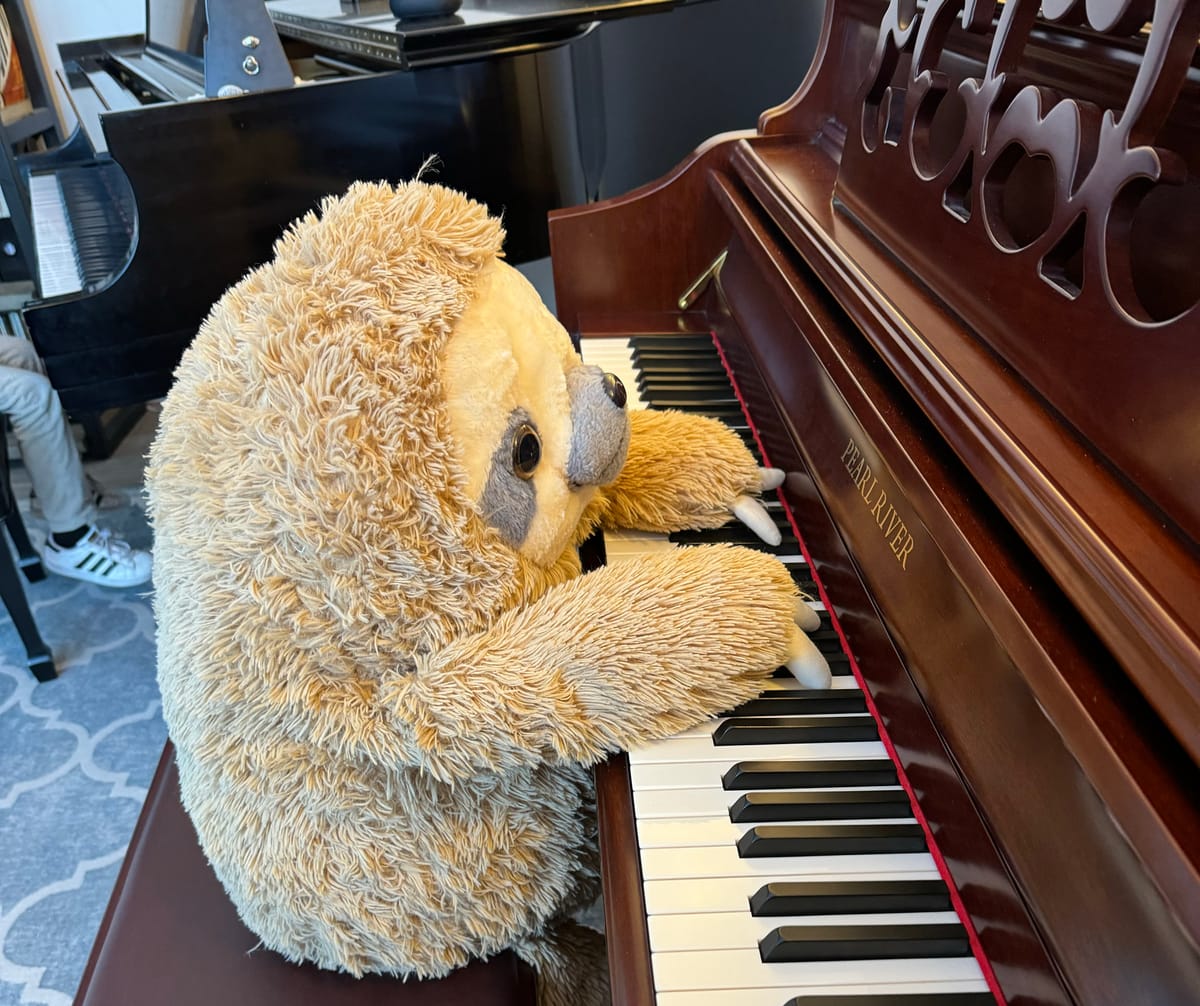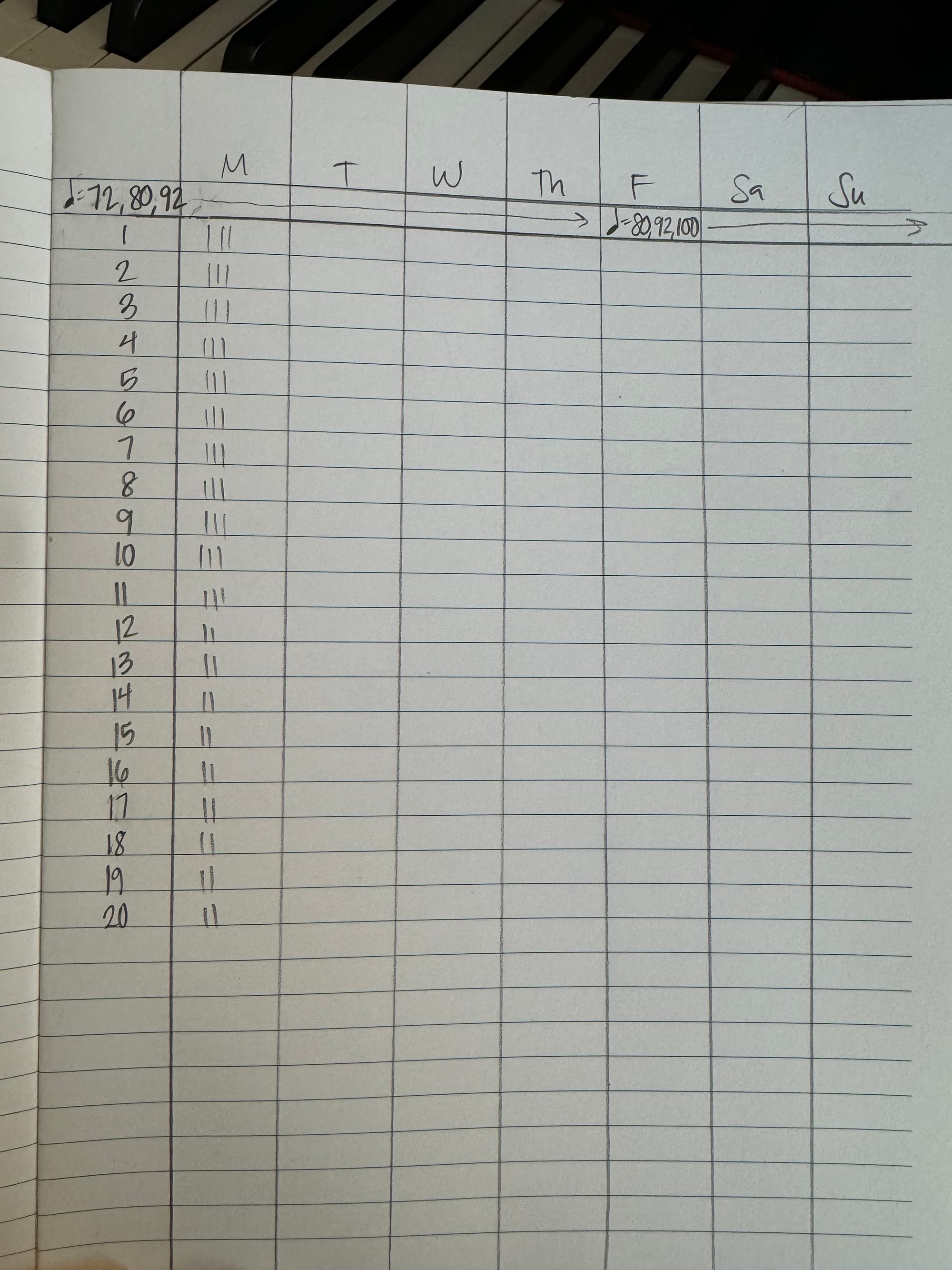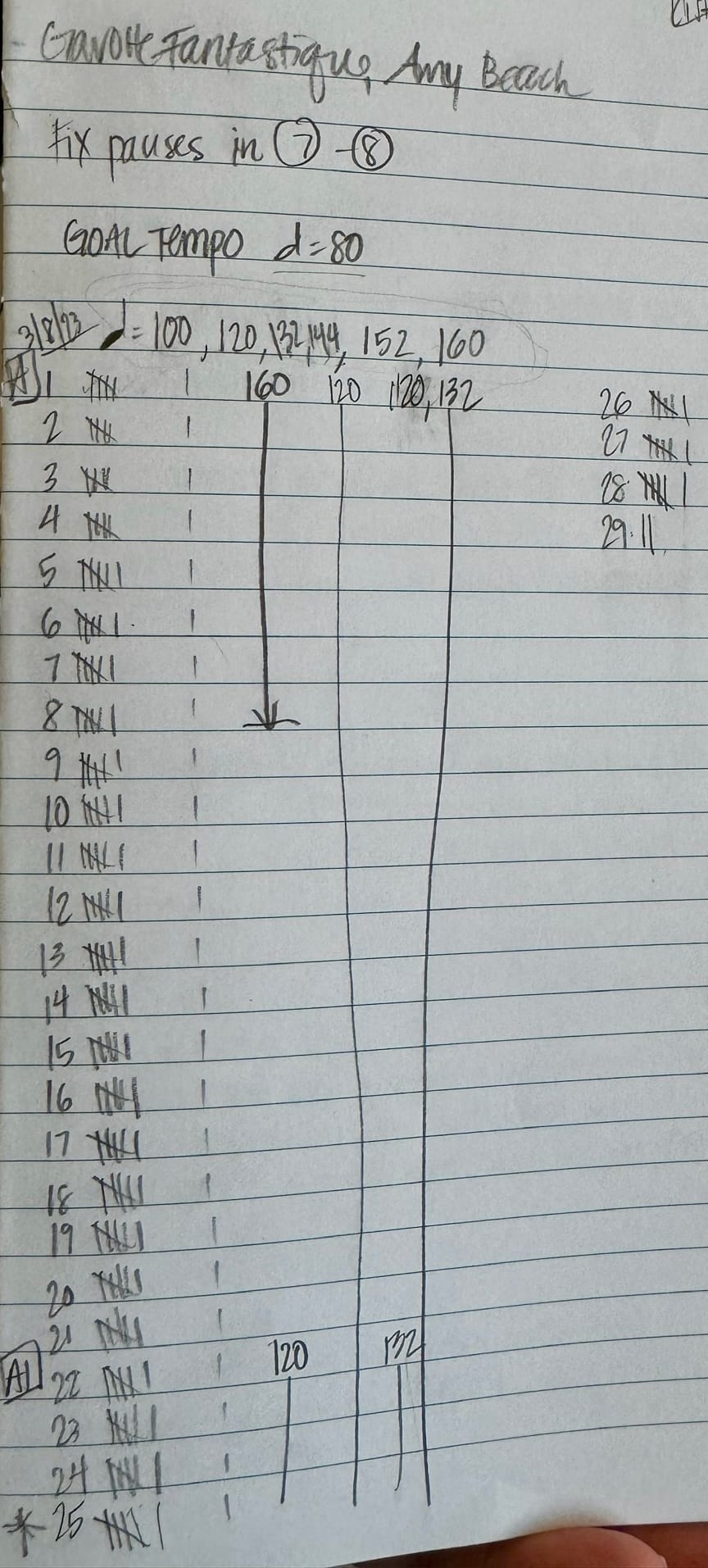Practicing Effectively

There are entire books dedicated to practice techniques and methods. This post is for students of all levels, to explain basic practice techniques that will help them establish good practice habits. This post is also for teachers and parents to be used as a resource.
What is the most effective way to practice a challenging passage or begin learning a new piece?
Focus on small goals!
Think of your piece as a big puzzle, when you dump it out of the box is it already put together? Of course not. Do you focus on one area first? Perhaps you focus on the edges first, or the red puzzle pieces that create the brightly colored tree in the picture on the box.
Just as there is no right way to assemble a puzzle, there is not just one way to practice a piece. Regardless of how you practice you will need to give attention and focus to small areas to create a larger ‘finished picture’.
So how should you go about doing this?
- Focus on and create small areas.
- Choose the most challenging areas to work on first.
- Set small goals for each practice session, and for the challenging areas.
- Choose a practice technique to use.
- Use a practice chart.
- Keep a practice journal.
Start by creating small areas
We all tend to digest smaller pieces of information better than larger pieces. Think of the puzzle again, isn't it easier to put together a few small pieces than to be given a pile of puzzle pieces to put together?

We can start by labeling sections of the piece with letters to show the musical form, such as binary and ternary. A and B are the most common letters to use. Look for a change in mood, key, or accompaniment style to find a new section. You may need guidance from your teacher if you have never done this.
You have smaller areas now, but not quite small enough. Next you'll need to number the phrases or 'starting spots' with the help of your teacher if necessary. A phrase is a 'musical sentence'. They are usually around four measures long. Phrases create great areas of focus, help with memorization, help you decide dynamics, and help you figure out the form of the piece.
Choose challenging areas first
Often we learn the first few phrases of a piece the very best, because we practice them the most. What we really need to do is practice the hardest phrases first, so they feel as comfortable as the easier phrases. With the help of your teacher (if needed) identify the most difficult phrases in the piece. Mark or list them in your practice journal. Give these phrases your attention first. These will be your target areas, or areas that you will practice first before moving on to other goals. Now you are ready to set small and specific goals.
Set small achievable goals
Here are some examples followed by possible practice techniques to accomplish each goal (descriptions for practice techniques are listed below):
- Example: Play all notes perfect in each phrase.
- Techniques: Slow to fast practice, repetition practice, add on practice, overlap practice
- Example: Learn all notes in a section.
- Techniques: Backwards practice, slow practice
- Example: Play each phrase with perfect fingering.
- Techniques: Slow practice, repetition practice, add-on practice
- Example: Remove pauses between specific phrases or beats.
- Techniques: Add-on practice, purposeful pause practice
- Example: Clean up a technically 'messy' phrase by making sure there are no 'ghost notes' (notes that don't sound when played) or 'double notes' (an extra note played but not written in the music).
- Techniques: Slow practice combined with staccato-forte practice
- Example: Play each phrase 3 times perfectly.
- Techniques: Slow practice, no pedal
- Example: Play all phrases perfectly with the metronome at 60=quarter note.
- Techniques: Slow to fast practice, no pedal, hands alone first
- Example: Decide on and experiment with dynamics in each phrase for a specific section.
- Techniques: Repetition practice with attention to small details
Descriptions of practice techniques
Repetition Practice
Use repetition practice to correct mistakes. The area could be as small as one beat or half of a measure depending on the difficulty of the passage. Remember that repeating mistakes will just reinforce the mistakes. Practice at a speed that you can play notes and fingering 100% accurately.
Overlap practice
When practicing a phrase or whole measure it’s a good idea to play the next beat to prevent a pause in playing. This is called overlap practice.
Backwards practice
Backwards practice is a great way to learn a new piece. Slowly play the last phrase of the piece, or even part of the phrase. Practice it until you are comfortable with it, then add the phrase before that, plus the last phrase. Continue the same way until you have mastered the section at a slow tempo.
Add-on practicing
Add on practicing is done by playing a measure or beat slowly then adding the next beat. After that is comfortable add another beat, and so on. This may seem like a slow process, but it is worthwhile and will save you time in the end. It's perfect for learning long difficult runs, mastering fingering, or learning difficult to read passages. You can also try add-on practice backward, by playing the last beat of a passage and adding on the note before, and so on.
Slow and staccato-forte practice
For accuracy and note learning start with slow practice, so slow you will not make a mistake. Combine this with staccato-forte practice for precision and strength, every note forte and staccato with firm fingertips. Put the dynamics on hold for now, and do not use the pedal. These details can be added in after the notes and rhythms are comfortable. You may need to practice this way hands apart first then hands together. If you are making mistakes then you are practicing too fast! Be careful about tension in your hands during this type of practice. If you find it happening you will want to move on to another type of practice.
Slow to fast practice
Slow to fast practice is extremely valuable but do not start this practice technique until comfort and accuracy is achieved at a very slow tempo. Use the metronome and count to do this correctly. Start at a slow tempo and once accurate raise the tempo on the metronome gradually until achieving the goal tempo. A practice chart is a valuable tool to use with this type of practice.
Small details
Pay attention to the small details: articulation, dynamics, and imagery, as well as any musical directions. Look up the meanings if needed. Include these details in your repetition practice.
Purposeful pause practice
When working on a difficult leap or transition between two beats or segments try purposefully prolonging the pause so that there is no risk of a mistake, then play the spot again and again gradually closing the gap. I first heard about this technique from the concert pianist Josh Wright, he calls it inserting gaps. He gives an excellent explanation of this, as well as add-on practice on one of his practice videos on YouTube. He teaches another technique called cycling that I won't go into here, but check it out.
Practice charts
Practice charts can help you keep track of all of these types of practice. The best way to do this is to simply list the phrase numbers included in your goal on the left side of a practice journal or notebook. Next you will create a simple graph. You could write the days of the week across the top of the page, in columns, if you will be practicing this goal multiple days. Or you could list the metronome speeds you will use in your goal, likewise in columns. You could combine the two together as well. See the example below.


Weekly chart (left) vs. Daily chart (right)
The chart on the left is for the week. It combines tempos and weekdays and changes tempos toward the end of the week. Tally marks are used to track which tempos have been achieved. They show that at phrase 12 the student has not yet achieved the tempo of 92, helping them keep track of progress.
The chart on the right is for one day and shows which phrases are at different tempos, helping the student know which phrases need the most work.
Keep a practice journal
How will you keep track of which goals you have set, which goals you have accomplished, which practice techniques worked, and which ones did not? A practice journal is a simple solution. Grab a notebook and make a few quick notes about your daily practice. You can also use a simple blank ledger book to create a practice chart. Here's a great one from Amazon: ledger
In conclusion
These are just some of the many effective practice techniques I have found useful. It can be overwhelming to try all of these right away, choose one to see how it works for you. You could also try inventing a game in connection with one of the techniques to make it more motivating and fun. There are so many possibilities. Good luck and happy practicing!
